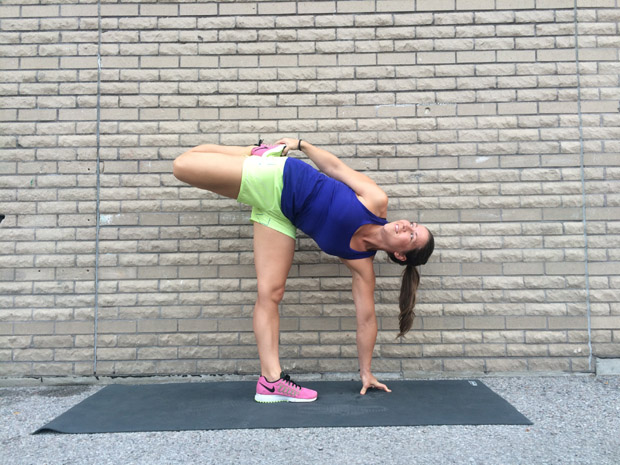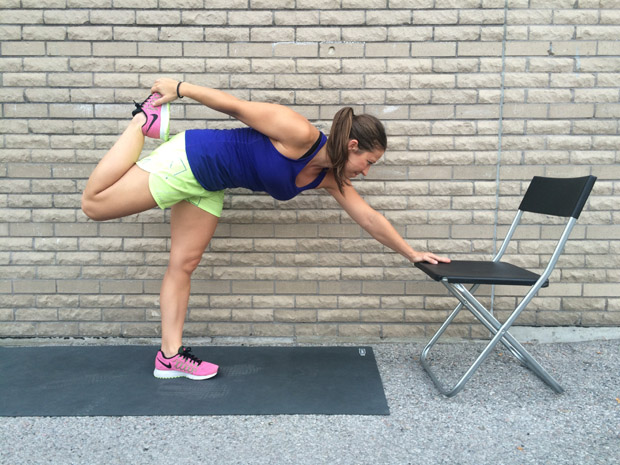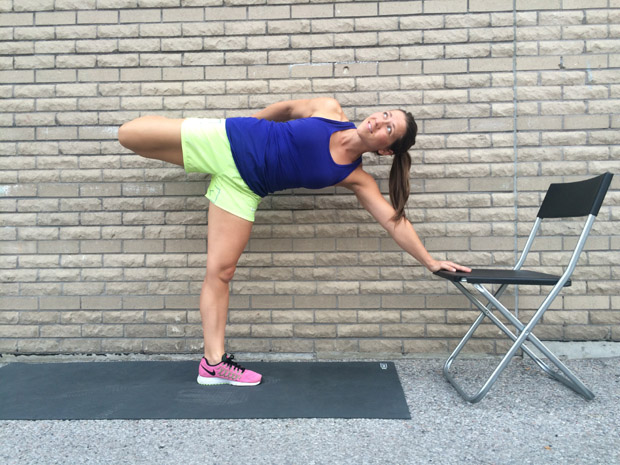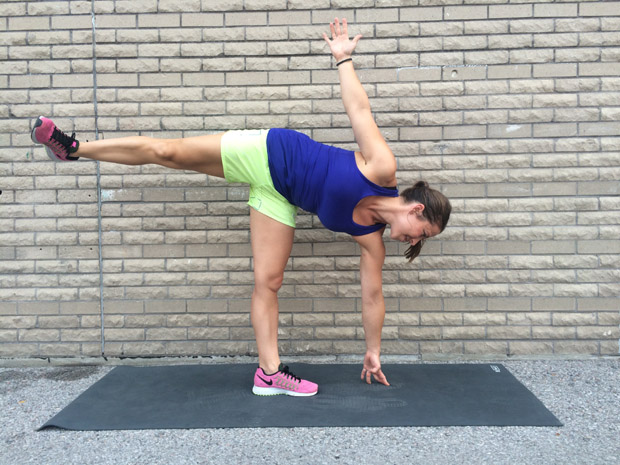Pose of the month: Sugar cane pose

This month’s pose is a triple-threat requiring balance, strength and flexibility.
To practice moving into sugar cane, it is recommended you try the modified versions first. Once you feel more confident try moving from half moon pose into sugar cane pose.

Modified version 1 – chair
Begin by placing a chair at top of your mat. Standing two feet away from the chair, feet hip-width apart, take a deep breath in and lift your foot back towards your buttocks. From there, grab your left ankle and as you exhale, fold forward at your waist and reach for the chair with your right hand.
On your next inhale, begin to open your hips, stacking your left hip on top of your right. Try to hold this position for 15-30 seconds before repeating on the other side.

Modified version 2 – block
Once you are comfortable with balancing using the chair, try the above sequence replacing the chair with a block. Try to hold this position for 15-30 seconds.
Sugar cane pose: (moving from half moon pose into sugar cane pose)
Beginning with your feet hip-width apart in the center of your mat, inhale and ground your right foot into the mat. As you exhale, lift your left leg back and hinge forward at the waist, bringing your chest parallel with the ground. Once balanced in this position, begin to open your hips, stacking your left hip on top of your right. From there, reach your right hand to the ground to complete half moon pose.

To continue into sugar cane pose, exhale as you bend your left knee toward your buttocks and grab your ankle. Try to hold this position for 15-30 seconds.
Since sugar cane pose requires balance and concentration, you will find it easiest to move through each step slowly. If you fall out of the pose, try again from the beginning. Take your time. This asymmetrical pose can be useful for runners, as it stretches different muscle groups in each leg, particularly your quadriceps, hamstrings, calves and hips.

Standing leg
The standing leg in sugar cane pose is responsible for balance. To achieve this, the quadriceps muscle contracts to straighten the leg and the sartorius muscle (the longest muscle in the body) contracts to keep the leg stable. The pose also stretches the hamstrings and the calves while strengthening the ankle.
Raised leg
The raised leg acts as a counterbalance to the weight of the torso. This pose strengthens the hip flexors and hip abductor muscles, specifically the tensor fascia latae, gluteus medius and, gluteus minimus. These muscles contract in order to hold the leg up. The quadriceps of the lifted leg is stretched as the foot is pulled towards the buttocks.


